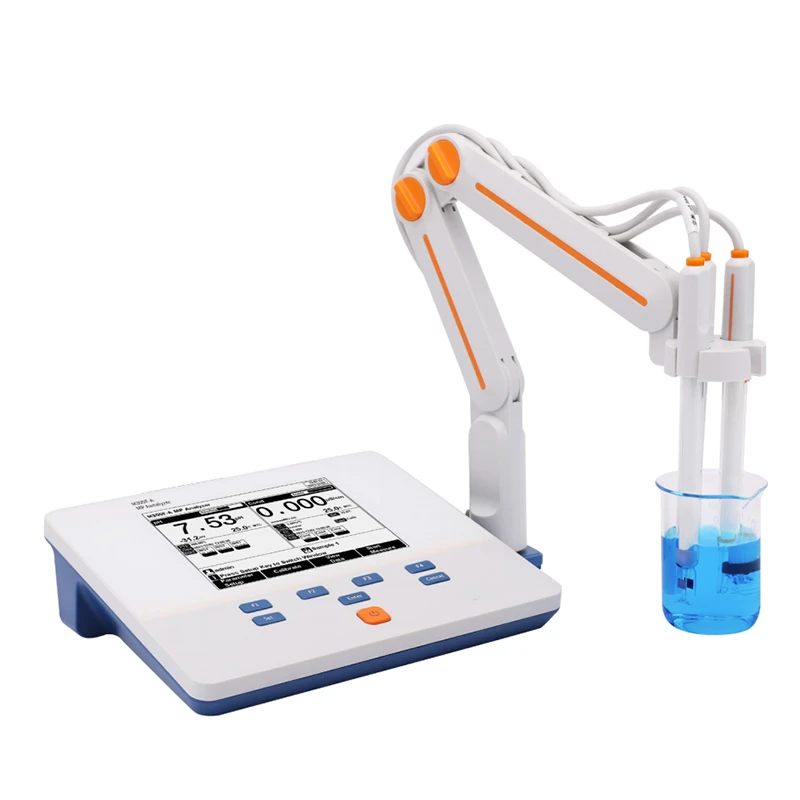Our lab analyzer is a high - tech instrument designed to deliver accurate and comprehensive analysis for a wide range of samples, especially crucial in water quality assessment.This advanced analyzer is equipped with state - of - the - art sensors and detection systems. It can precisely measure various physical, chemical, and biological parameters in water samples. For physical properties, it quickly determines temperature, turbidity, and color with high precision. In terms of chemical analysis, it can detect and quantify elements like nitrogen, phosphorus, and heavy metals.
The built - in technology allows for sensitive detection of even trace amounts of these substances, crucial for assessing water pollution levels.When it comes to biological analysis, our lab analyzer can identify and count different types of microorganisms present in the water, such as bacteria, viruses, and protozoa. This helps in evaluating water potability and its impact on aquatic ecosystems.
The user - friendly interface of the lab analyzer makes operation a breeze. Lab technicians can easily input sample details, start the analysis process, and receive detailed reports in a short time. Its compact design allows for easy installation in laboratories of all sizes, whether in environmental monitoring centers, water treatment plants, or research institutions. With our lab analyzer, accurate and efficient sample analysis is guaranteed, providing essential data for informed decision - making in water resource management, environmental protection, and public health maintenance.
What Does An Analyzer Machine Do?
An analyzer machine is a sophisticated device that plays a pivotal role in diverse industries by providing in - depth analysis of various substances. In the context of water quality assessment, it is an indispensable tool.This advanced machine is equipped with a range of specialized sensors and detection mechanisms. Physically, it can measure properties like temperature, turbidity, and color in water samples. Temperature affects the solubility of gases and the metabolic rates of aquatic organisms. Turbidity indicates the presence of suspended particles, which can impact light penetration and aquatic life. Color can be an indicator of dissolved organic matter or contaminants.Chemically, the analyzer machine can detect and quantify elements such as nitrogen, phosphorus, and heavy metals. High levels of nitrogen and phosphorus can lead to eutrophication, causing algal blooms and oxygen depletion in water bodies. Heavy metals, like lead, mercury, and cadmium, are toxic and pose a threat to human and environmental health.
Biologically, it can identify and count different types of microorganisms, including bacteria, viruses, and protozoa.This information is crucial for determining water potability and assessing the impact on aquatic ecosystems. In industries like pharmaceuticals, food and beverage, and environmental monitoring, the analyzer machine ensures product quality and compliance with safety standards. It simplifies complex analysis processes, providing accurate results quickly, enabling informed decision - making for maintaining quality, protecting the environment, and safeguarding public health.
What Is The Role Of An Analyzer?
An analyzer is a highly sophisticated and versatile device that serves as the cornerstone of accurate and detailed substance analysis across numerous industries. Its role is multi - faceted, making it an indispensable tool in maintaining quality, ensuring safety, and driving scientific research.In the realm of water quality assessment, the analyzer plays a pivotal role. Physically, it measures key parameters such as temperature, turbidity, and color in water samples. Temperature influences the solubility of gases and the metabolic activities of aquatic organisms. By precisely determining the water's temperature, analysts can predict potential changes in water chemistry and the behavior of aquatic life. Turbidity, which indicates the presence of suspended particles, affects light penetration in water bodies. High turbidity levels can disrupt photosynthesis in aquatic plants and reduce the visibility for aquatic animals.
The analyzer's ability to accurately measure turbidity helps in evaluating water clarity and its overall health. Color analysis can reveal the presence of dissolved organic matter or contaminants, providing early warnings of water pollution.The analyzer is a powerful detector. It can precisely identify and quantify elements like nitrogen, phosphorus, and heavy metals. Excessive nitrogen and phosphorus in water can trigger eutrophication, leading to algal blooms that deplete oxygen levels and harm aquatic ecosystems. Analyzing heavy metals such as lead, mercury, and cadmium is crucial as these are highly toxic and can accumulate in the food chain, endangering human health.
Biologically, the analyzer can identify and count different types of microorganisms, including bacteria, viruses, and protozoa. This information is vital for determining water potability. Even a small presence of harmful microorganisms can cause water - borne diseases. In industries like pharmaceuticals, the analyzer ensures the quality of raw materials and finished products. It detects impurities and contaminants, guaranteeing that medications are safe and effective.In the food and beverage industry, it verifies the quality and safety of products, from analyzing the nutritional content to detecting harmful pathogens. In environmental monitoring, the analyzer helps in tracking pollution levels, enabling timely interventions to protect the environment. Overall, the analyzer simplifies complex analysis processes, providing accurate and timely results that are essential for informed decision - making in various fields.








